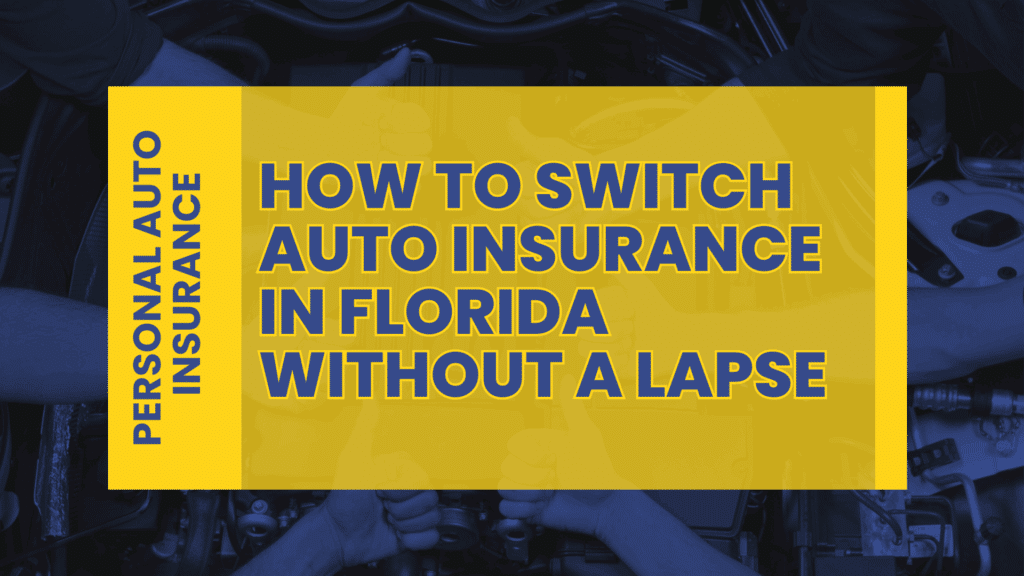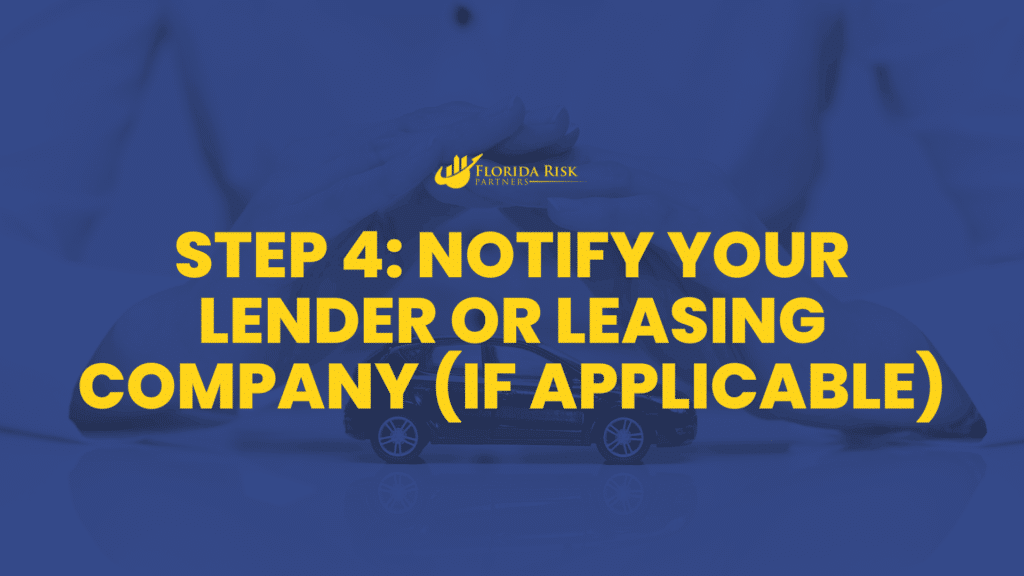-
Main Office: 1434 E. Bloomingdale Ave Valrico, FL 33596-6110
-
Phone: (888) 601-6660
-
Email: info@floridariskpartners.com

A Step-by-Step Guide to Changing Providers Smoothly and Saving Money
You’ve done the research. You’ve compared quotes, evaluated coverage options, and found a better deal. Now what?
If you’re ready to switch auto insurance companies, the last thing you want to do is cancel your current policy too soon—or worse, cause a lapse in coverage that leads to fines, penalties, or even license suspension. In Florida, continuous car insurance coverage isn’t just smart—it’s the law.
This post walks you through the entire process of how to switch auto insurance in Florida, from getting your new policy in place to properly notifying your old insurer. Follow these steps to save money and stay compliant with state regulations.
Why It’s Important to Avoid a Lapse in Coverage
Florida law requires that you maintain continuous insurance coverage on any vehicle with an active registration. Even a one-day lapse can result in:
- Suspension of your driver’s license and vehicle registration
- Fines ranging from $150 to $500
- Mandatory reinstatement fees and SR-22 filings (for high-risk insurance)
That’s why it’s critical to ensure your new policy is active before you cancel your existing one. Skipping this step can lead to costly consequences, even if the lapse is unintentional.
Want to learn more about Florida’s insurance requirements? Read our guide to minimum auto insurance in Florida.
Step 1: Choose Your New Policy First

Before doing anything with your current provider, make sure you’ve:
- Chosen a new insurance carrier
- Selected the appropriate coverage levels and deductibles
- Confirmed the effective date of the new policy
- Received written confirmation or ID cards showing your coverage start date
You’ll want your new policy to start either on the same day your old policy ends—or ideally, a day earlier to ensure overlap.
Tip: Don’t base your decision on price alone. Review how to compare Florida auto insurance quotes to ensure you’re choosing the right coverage.
Step 2: Contact Your New Insurance Company
Once you’ve picked a new policy, your next step is to finalize the activation:
- Provide vehicle and driver information
- Pay the first month’s premium or set up auto-pay
- Request proof of insurance (ID cards and declarations page)
- Confirm the policy’s effective date is accurate and binding
Your new insurer will often notify the DMV electronically, but keep your ID cards on hand in case proof is required at registration renewal or during a traffic stop.
Step 3: Cancel Your Old Policy—After the New One Is Active
After your new policy is in effect, you’re ready to cancel your old one. Contact your previous insurer and:
- Request cancellation effective on or after your new policy’s start date
- Ask for a written cancellation confirmation
- If you paid in full, request any applicable refund for unused premium
- Make sure any automatic payments are turned off
Pro tip: Always cancel in writing and ask for proof. This protects you in case of a billing dispute or accidental lapse.
Step 4: Notify Your Lender or Leasing Company (If Applicable)

If your vehicle is financed or leased, you’ll need to provide updated proof of insurance to your lienholder. Most lenders require:
- A declarations page from your new policy
- The lender listed as a loss payee on the policy
- Confirmation that comprehensive and collision coverage is included
Failing to update your lender could result in forced-place insurance, which is expensive and provides minimal protection.
Have questions about lender-required coverage? Read our guide to choosing full coverage auto insurance in Florida.
Step 5: Monitor for Final Billing and Refunds
After you cancel your old policy, keep an eye on your bank account and email for:
- A final bill or confirmation of your policy’s termination
- A prorated refund if you paid for coverage ahead of time
- Notices regarding early cancellation fees (rare, but possible depending on the insurer)
Be sure to shred or securely store any old ID cards or paperwork you no longer need.
Step 6: Double-Check Your DMV Status
Even if everything seems squared away, it’s a good idea to log in to the Florida Department of Highway Safety and Motor Vehicles (FLHSMV) portal and verify that your registration is still in good standing.
If there’s a delay in processing or a mismatch between your policy dates, it could trigger a compliance issue. Having your updated ID cards and confirmation letters on hand will help resolve any errors quickly.
Final Thoughts: Switch Smart, Not Fast
Changing car insurance companies in Florida isn’t difficult—but it requires attention to detail. The key is making sure your new policy is fully active before canceling the old one, and taking the proper steps to notify all relevant parties.
Done right, you can enjoy:
- Lower premiums
- Better customer service
- Improved coverage that better fits your lifestyle and risk profile
And remember, switching doesn’t always mean starting from scratch. If you’re happy with your coverage but unhappy with your service, a quick review might reveal better options elsewhere.
If you need help switching providers, comparing policies, or ensuring compliance, schedule a free auto insurance review with our team. We’ll guide you through every step.
Coming Next Week: How Accidents and Tickets Affect Your Insurance Rate
Think your driving record doesn’t impact your wallet? Next week, we’ll break down how traffic violations, speeding tickets, and at-fault accidents affect your auto insurance premium in Florida—and what you can do to minimize the damage.
Call Us Or
Schedule an Appointment
Select an agent below to view our online calendars and select a day and time that works best for you or call us directly at 888-601-6660. When you use our online calendars, you will receive an email with more information.



